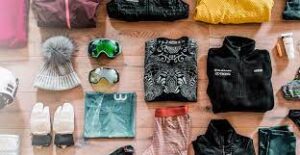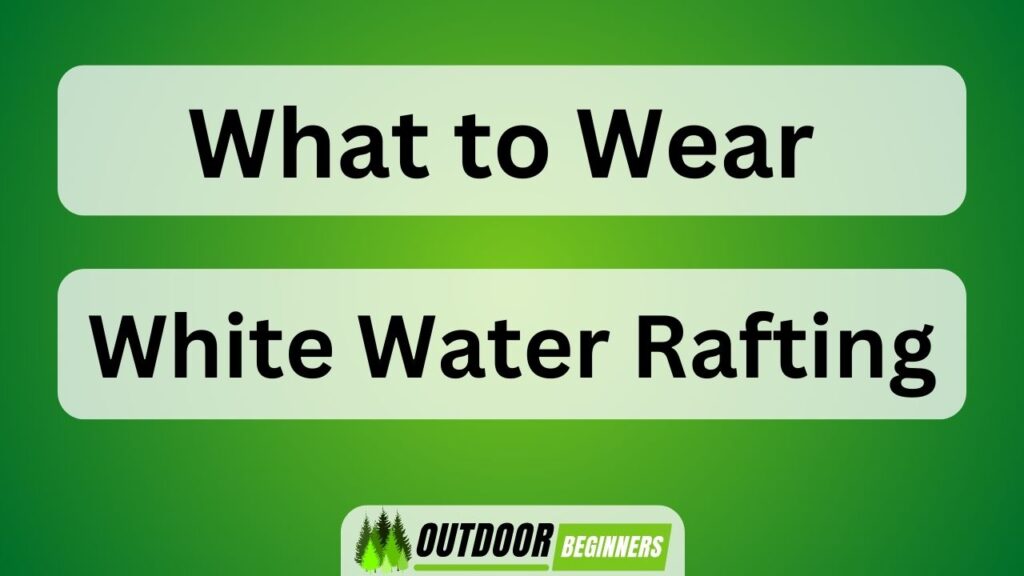Planning for a ski trip can be an exhilarating, yet overwhelming experience. We’ve got you covered with our comprehensive guide on what to pack.
From essential clothing and accessories to protective gear and ski equipment, we’ll ensure that you’re fully prepared for your snowy adventure.

Don’t forget to layer up with winter outerwear and bring along those cozy socks.
And of course, we’ll help you remember the toiletries and personal care items that are often overlooked.
Plus, we’ve got some valuable tips on miscellaneous items and extras that will make your trip even better.
Let’s dive in!
Key Takeaways of What to Pack for a Ski Trip
- It is important to pack essential clothing and accessories such as a warm waterproof jacket, waterproof pants, a hat or beanie, gloves or mittens, and a scarf or neck gaiter.
- When packing for a ski trip, it is advisable to roll clothes instead of folding, pack layers for temperature adjustments, overpack rather than underpack, and consider the weather conditions.
- Protective gear like helmets, goggles, ski equipment, and safety measures should be included in your packing list for a ski trip.
- The essential ski equipment for a ski trip includes skis or a snowboard, wax and edge sharpener, consideration of renting vs buying, personal preference, and cost-effectiveness.
Essential Clothing and Accessories
You’ll want to make sure you pack a warm waterproof jacket and pants for your ski trip. These are essential items that will keep you dry and insulated in the snowy mountains.

In addition to these basics, there are other winter accessories you should consider packing. First, don’t forget to bring a hat or beanie to keep your head warm. It’s also important to have gloves or mittens to protect your hands from the cold. A scarf or neck gaiter can help keep your neck and face protected from the wind. Lastly, thermal socks and a good pair of boots are crucial for keeping your feet warm and comfortable on the slopes.
When it comes to packing tips, roll your clothes instead of folding them to save space in your suitcase. Pack layers so that you can easily adjust your clothing based on the temperature throughout the day. And remember, it’s better to overpack than underpack when it comes to ski trips because you never know what weather conditions you might encounter.
Now that we’ve covered essential clothing and accessories, let’s move on to discussing protective gear such as helmets and goggles for a safe skiing experience.
Protective Gear
When it comes to hitting the slopes, having the right ski equipment is essential for both safety and performance.
From skis and boots to poles and bindings, each piece of gear plays a crucial role in ensuring a smooth and enjoyable experience on the mountain.

In this discussion, we will delve into the importance of choosing the right gear, as well as explore safety measures that should be taken while skiing.
Essential Ski Equipment
Packing for a ski trip? Don’t forget to bring your essential ski equipment! When it comes to hitting the slopes, having the right gear is crucial.
First and foremost, make sure you have skis or a snowboard that suits your skill level. It’s important to maintain your ski equipment properly, so don’t forget to pack wax and an edge sharpener. These will help keep your skis or board in top shape throughout your trip.

Now, the question arises: should you rent or buy? Renting can be convenient if you don’t go skiing often, but if you’re a frequent skier, investing in your own gear might be more cost-effective in the long run. Ultimately, it boils down to personal preference and how often you plan on hitting the slopes. Make sure to choose what works best for you!
Safety on the Slopes
Wearing a helmet is crucial for safety on the slopes. It not only protects our heads from potential injuries but also helps us stay aware of our surroundings.
Here are three important points to consider when it comes to helmet safety and avalanche awareness:
- Proper Fit: Make sure your helmet fits snugly on your head without any gaps. Adjust the straps and padding to ensure a secure fit.
- Certification: Look for helmets that meet industry standards, such as ASTM F2040 or CE EN 1077. These certifications guarantee that the helmet has undergone rigorous testing for impact protection.
- Avalanche Beacons: If you plan on skiing in backcountry areas, always carry an avalanche beacon. This device emits signals that can help rescuers locate you in case of an avalanche.
Choosing the Right Gear
It’s important to choose the right gear for your ski trip, including skis, boots, and poles. When planning a ski trip, it’s crucial to consider the destination and the type of skiing you’ll be doing. Different ski trip destinations offer varying terrain and conditions, so you need equipment that suits those specific needs.
For example, if you’re heading to a powder-heavy location like Utah or Colorado, you’ll want wider skis with more surface area to help you float on top of deep snow. On the other hand, if you’re going to an icy resort in the east coast or Europe, narrower skis with better edge grip will be more suitable.
It’s also important to ensure that your boots fit properly and are comfortable for long days on the slopes. By choosing the right gear for your ski trip, you can maximize your enjoyment and performance on the mountain.
Ski Equipment
Don’t forget to bring your skis and boots for the trip. Skiing is one of the main activities you’ll be enjoying, so having the right equipment is essential. Here are some important things to consider when it comes to ski equipment:
- Ski Boots: Make sure your boots fit properly and provide good support. They should be snug but not too tight, allowing for proper control and comfort on the slopes.
- Skis: Choose skis that are suitable for your skill level and skiing style. Longer skis offer more stability at high speeds, while shorter ones are easier to maneuver. Consider renting if you don’t have your own.
- Ski Poles: These help with balance, turning, and pushing off while skiing. Adjustable poles allow you to customize their length based on your preference.
Having the right ski equipment is crucial for an enjoyable skiing experience.
Now let’s move on to discussing what winter outerwear you should pack for your ski trip!
Winter Outerwear
When it comes to hitting the slopes, having the right winter outerwear is essential. Not only does it protect you from the cold temperatures, but it also adds a touch of style to your ski ensemble. From trendy parkas to sleek puffer jackets, there are plenty of options to choose from for both men and women.
For women, a fitted ski jacket in a bold color or pattern can make a statement on the mountain. Pair it with some slim-fitting snow pants and stylish accessories like a chunky knit beanie or faux fur earmuffs for added warmth and flair.
Men can opt for a more rugged look with a waterproof shell jacket layered over a cozy fleece or thermal base layer. Complete the outfit with some durable snow pants and insulated gloves for maximum comfort.
Layering Essentials
When it comes to staying warm in cold weather, thermal wear is of utmost importance. Not only does it provide an extra layer of insulation, but it also helps regulate body temperature and keeps moisture away from the skin.
Choosing the right jacket is equally crucial as it determines how well you are protected from the elements. It should be windproof, waterproof, and breathable to ensure maximum comfort and functionality.
Importance of Thermal Wear
Make sure you pack thermal wear for your ski trip because it will keep you warm and comfortable on the slopes. Thermal wear, also known as base layers, is essential for outdoor activities in cold weather.
Here are some benefits of wearing thermal wear:
- Insulation: Thermal wear is designed to provide excellent insulation by trapping body heat and keeping you warm even in freezing temperatures.
- Moisture-wicking: Good quality thermal wear helps to wick away sweat from your body, keeping you dry and preventing any discomfort caused by moisture.
- Breathability: Thermal wear allows your skin to breathe, preventing overheating and ensuring optimal comfort.
When choosing the right thermal wear for cold weather sports, consider these factors:
- Material: Look for thermal wear made from high-quality fabrics like merino wool or synthetic materials that offer good insulation and moisture-wicking properties.
- Fit: Choose a snug fit that allows easy movement without being too tight or restrictive.
- Layering compatibility: Ensure that your chosen thermal wear can easily be layered under other clothing items.
Now that you know the importance of packing thermal wear, let’s move on to choosing the right jacket for your ski trip.
Choosing the Right Jacket
It’s important to consider the weather conditions and insulation properties when choosing the right jacket for outdoor activities in cold weather. The right jacket can make or break your experience, keeping you warm and protected from the elements. When it comes to choosing the best jacket brands, there are a few key features to look out for.
To help you make an informed decision, we have created a table comparing five popular jacket brands based on their key features:
| Brand | Insulation | Waterproofing | Breathability | Price Range |
|---|---|---|---|---|
| Patagonia | Synthetic | Yes | High | $$$ |
| The North Face | Down | Yes | Medium | $$$ |
| Columbia | Synthetic | Yes | Medium | $$ |
| Arc’teryx | Down | Yes – |
Footwear and Socks
Don’t forget to pack your warmest socks and waterproof boots for the ski trip. Having the right footwear is essential for a comfortable and enjoyable skiing experience. Here are some tips to help you choose the perfect ski boots and moisture-wicking socks:
- Ski Boots:
- Look for boots that provide a snug fit without being too tight.
- Consider getting custom-fit or professionally fitted boots for maximum comfort and performance.
- Choose boots with good insulation to keep your feet warm in cold temperatures.
- Moisture-Wicking Socks:
- Opt for socks made from synthetic materials like merino wool or polyester blends.
- Look for socks with cushioning in key areas, such as the heel and ball of the foot, to provide extra support and prevent blisters.
- Make sure the socks have moisture-wicking properties to keep your feet dry by pulling sweat away from your skin.
Toiletries and Personal Care Items
Now that we’ve covered footwear and socks, let’s move on to another important aspect of packing for a ski trip: toiletries and personal care items.
When it comes to travel size products, it’s essential to bring along items that will keep your skin and hair healthy in the harsh winter conditions.
First and foremost, don’t forget to pack your skincare essentials such as cleanser, moisturizer, and sunscreen. These are crucial for protecting your skin from the sun’s rays even on cold days. Additionally, consider bringing lip balm with SPF to prevent chapped lips.
In terms of haircare, opt for a hydrating shampoo and conditioner combo to combat dryness caused by the cold weather. Don’t forget a brush or comb, as well as any styling products you may need.
With these travel-sized toiletries in hand, you’ll be able to maintain your skincare routine even while on vacation.
Now let’s move on to our next section: miscellaneous items and extras…
Miscellaneous Items and Extras
When packing for your ski trip, be sure to include some miscellaneous items and extras that can come in handy during your vacation. Here is a packing checklist of ski trip essentials to help you make the most of your time on the slopes:
- Ski Accessories:
- Hand and toe warmers: Keep your extremities cozy in cold weather.
- Neck gaiter or balaclava: Protect your face from windburn.
- Helmet cover: Add a personal touch while keeping your head warm.
- Entertainment:
- Playing cards or board games: Perfect for après-ski relaxation.
- Portable speaker: Enjoy music while chilling in the lodge.
- Camera or GoPro: Capture amazing ski moments.
- Safety and First Aid:
- Sunscreen and lip balm with SPF: Shield yourself from sunburn.
- Small first aid kit: Be prepared for minor injuries on the slopes.
- Emergency contact list: Ensure safety in case of accidents.
Including these miscellaneous items and extras will enhance your ski trip experience, making it more enjoyable and convenient.
Happy skiing!
Frequently Asked Questions
Are Ski Goggles Necessary for a Ski Trip?
Ski goggles are necessary for a ski trip because they provide better eye protection than sunglasses. When choosing the right ski goggles, consider factors such as fit, lens type, and weather conditions.
How Many Pairs of Gloves or Mittens Should I Bring?
When deciding how many pairs of gloves or mittens to bring on a ski trip, consider the weather conditions and duration of your trip. It’s important to choose the right ski gloves or mittens for maximum warmth and protection. Some popular brands include Hestra, Burton, and Dakine.
Should I Pack a Helmet for a Ski Trip?
When it comes to ski trip safety, packing essentials like a helmet is crucial. It provides protection for our heads and reduces the risk of serious injury while enjoying the slopes.
Are Thermal Underwear and Base Layers Necessary for Skiing?
Thermal underwear alternatives and the benefits of base layers for snowboarding depend on personal preference and weather conditions. They can provide added warmth, moisture-wicking properties, and comfort, making them a popular choice for many skiers.
Is It Recommended to Bring a Backpack for a Ski Trip?
Is it recommended to bring a backpack for a ski trip? Absolutely! Backpacks are essential for skiing as they allow us to carry our ski trip essentials such as water, snacks, extra layers, and other personal items.
Conclusion
In conclusion, packing for a ski trip is not just about the physical items we bring along. It represents our readiness to embrace adventure and face the challenges that lie ahead.
Each item symbolizes our determination to conquer the slopes, protect ourselves, and enjoy the beauty of winter. From the essential clothing and accessories to the ski equipment and winter outerwear, every choice we make reflects our passion for this exhilarating sport.
So pack wisely, my friends, and let your gear be a testament to your love for skiing!




